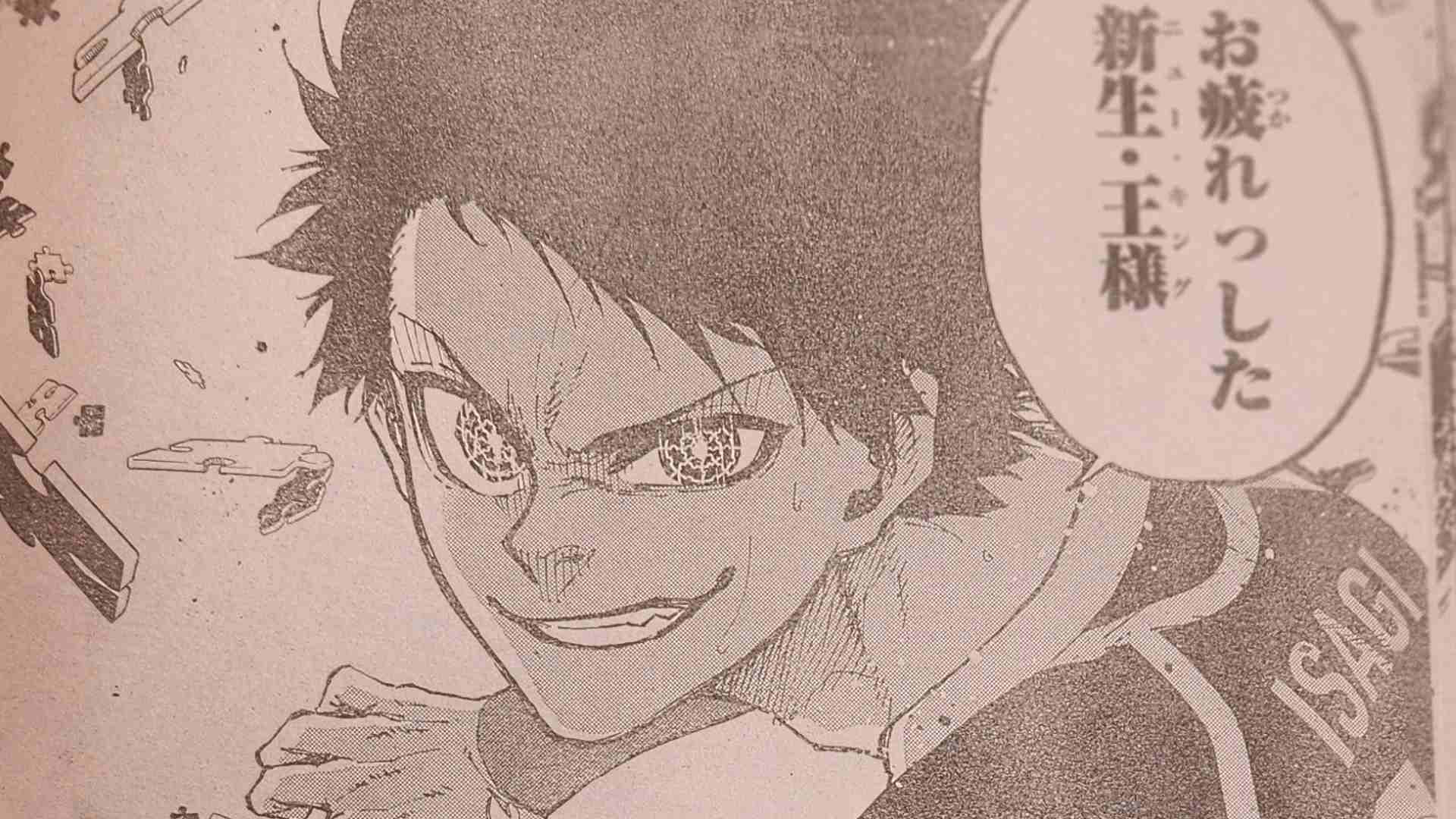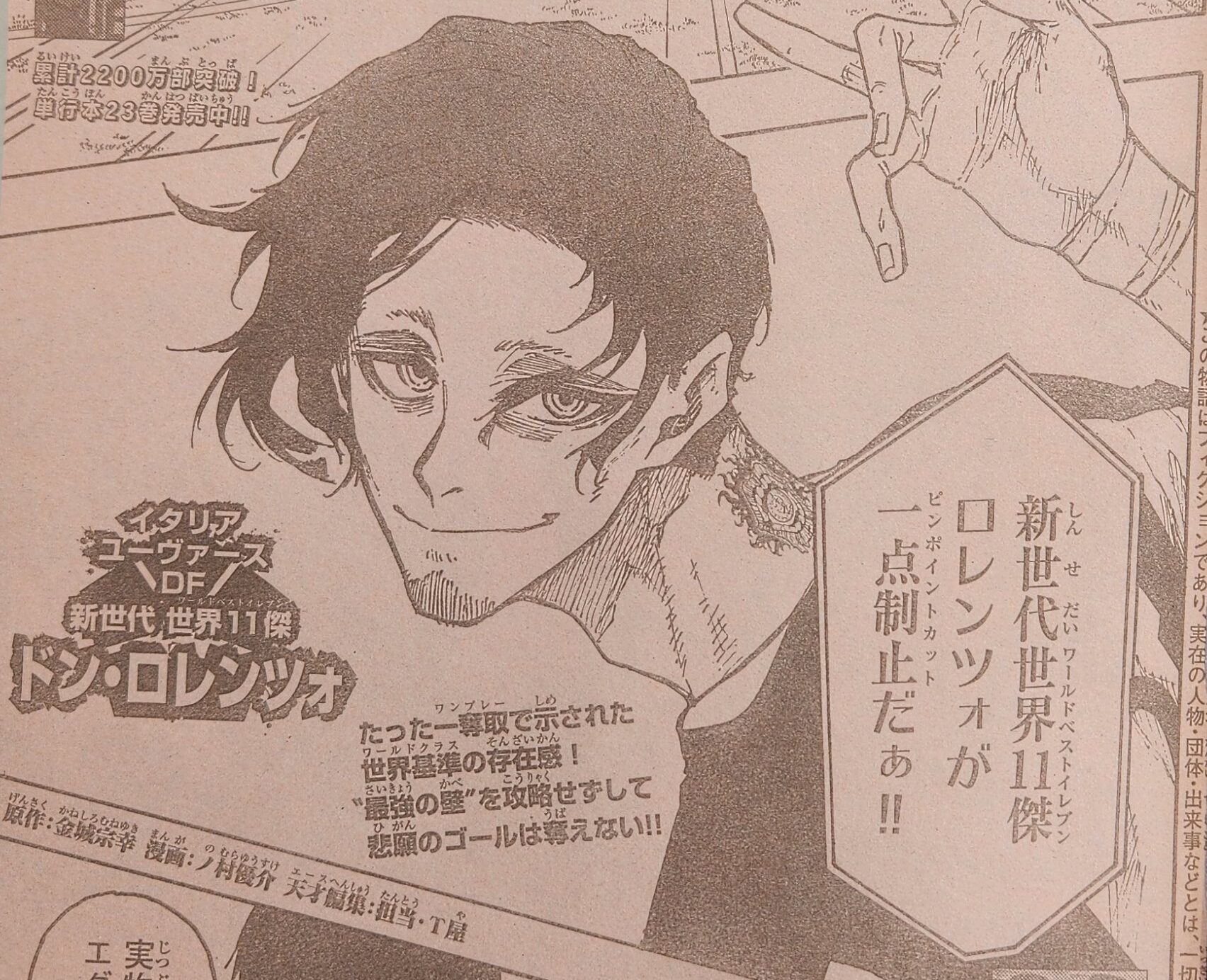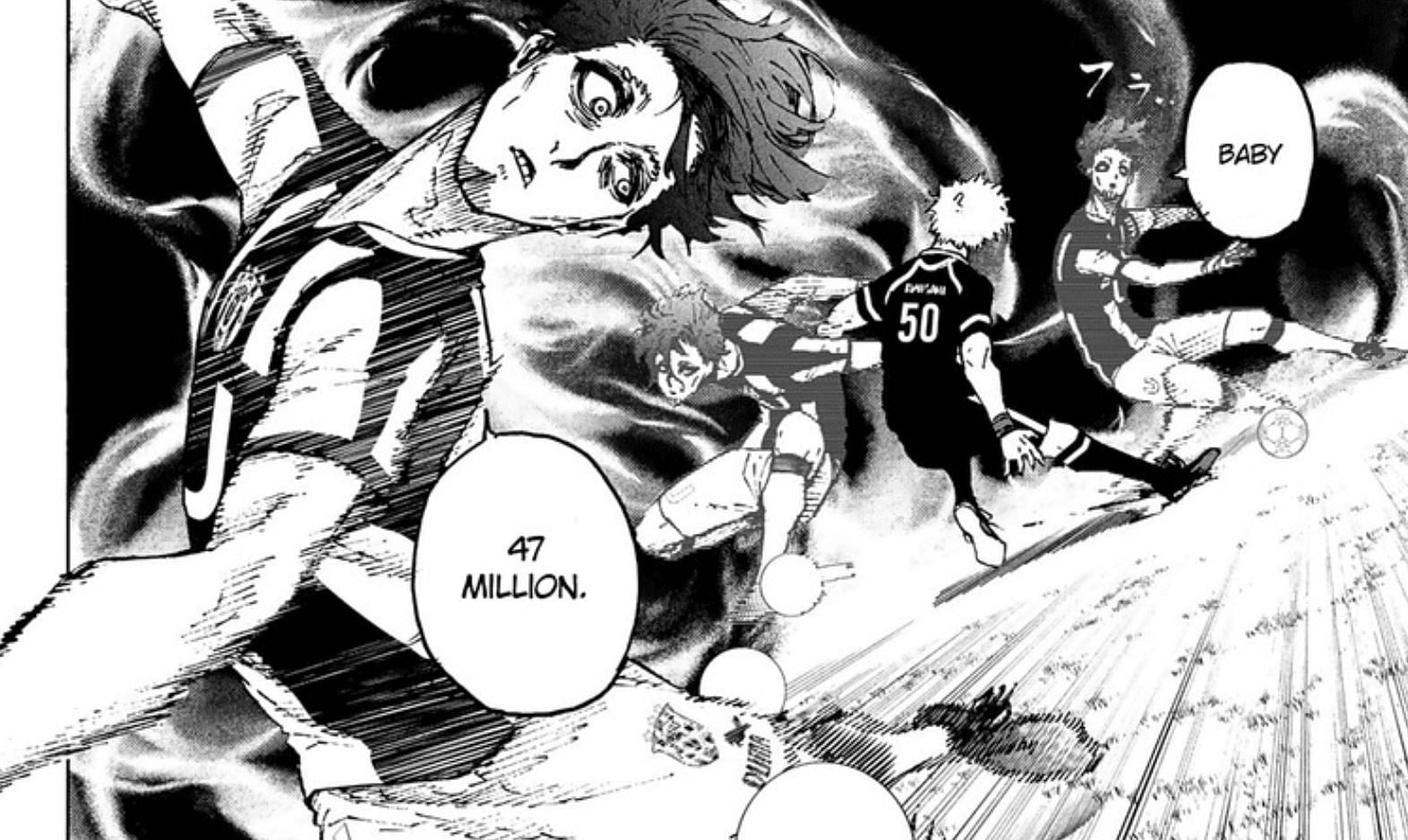Blue Lock Chapter 211 marks a pivotal moment in the ongoing Blue Lock journey, as the players face new challenges and their true potential is tested. Dive into the depths of this chapter to uncover the intricate strategies, character development, and symbolic themes that shape this captivating narrative.
With the Blue Lock project reaching its climax, the stakes have never been higher. The remaining players are pushed to their limits as they compete for a spot on the national team. Chapter 211 brings forth a series of intense matches that will determine the fate of their dreams.
Plot Summary

Chapter 211 of “Blue Lock” continues the intense match between Team Z and Team V. Isagi Yoichi, the protagonist, finds himself facing off against the formidable defender Aoshi Tokimitsu.
Isagi’s team is desperate to score a goal and secure a spot in the next stage of the competition. However, Aoshi’s exceptional defensive skills pose a significant obstacle.
Isagi’s Determination
Despite the challenges, Isagi remains determined to break through Aoshi’s defense. He utilizes his analytical abilities to study Aoshi’s movements and patterns.
Aoshi’s Counterattack
As Isagi begins to understand Aoshi’s weaknesses, Aoshi responds with a series of unexpected counterattacks. He uses his physical strength and speed to disrupt Isagi’s plans.
Character Development
Isagi Yoichi, the main protagonist of Blue Lock, continues to exhibit significant growth and development in chapter 211. His actions and interactions throughout the chapter highlight his evolving personality and motivations.
Introspection and Reflection
Isagi’s internal dialogue and self-analysis reveal a deep level of introspection and reflection. He recognizes his own weaknesses and limitations, but also acknowledges his potential for growth. This self-awareness allows him to make conscious decisions and adapt his strategies accordingly.
Goal-Oriented Mindset
Isagi’s unwavering determination to become the world’s best striker remains his primary motivation. However, his focus has shifted from simply scoring goals to creating opportunities for his teammates and contributing to the overall success of the team. This demonstrates his growing understanding of the importance of collaboration and selflessness.
Adaptability and Resourcefulness
Faced with challenging opponents and unforeseen circumstances, Isagi demonstrates remarkable adaptability and resourcefulness. He quickly analyzes the situation and devises creative solutions to overcome obstacles. This ability to think on his feet and adjust to changing situations is a testament to his growing maturity and tactical prowess.
Emotional Growth
Isagi’s interactions with his teammates and rivals reveal his emotional growth. He shows empathy and compassion for others, even those who have wronged him. Additionally, he has learned to control his emotions and remain composed under pressure, allowing him to make rational decisions in critical moments.
Tactical Strategies

Chapter 211 of Blue Lock showcases a clash of tactical strategies between Team Z and Team V. Team Z, led by Isagi Yoichi, employs a fluid formation that emphasizes quick passing and off-the-ball movement. Their goal is to create numerical advantages in specific areas of the pitch, allowing them to exploit gaps in Team V’s defense.
Team V, on the other hand, adopts a more structured approach, relying on a rigid 4-4-2 formation. Their strategy involves maintaining possession and using their physical strength to dominate aerial duels. They also employ a high press to disrupt Team Z’s build-up play.
Formations, Blue lock chapter 211
Team Z’s formation is highly flexible, with players constantly switching positions and creating triangles. They use a combination of short passes and quick movements to penetrate Team V’s defense.
Team V’s 4-4-2 formation provides them with a solid defensive base. The two central defenders are responsible for marking Team Z’s forwards, while the full-backs push forward to support the attack. The two central midfielders provide cover for the defense and initiate attacks.
Plays
Team Z’s key play is the “off-the-ball run.” Players make runs into space to create passing options for their teammates, dragging defenders out of position and creating gaps in Team V’s defense.
Team V relies on direct play, using long passes to switch the field and create chances for their forwards. They also use set pieces, such as corners and free kicks, to exploit Team Z’s weakness in aerial duels.
Individual Techniques
Isagi Yoichi uses his “spatial awareness” to identify gaps in Team V’s defense and make runs into space. He also possesses excellent dribbling skills and can create chances for his teammates.
Barou Shoei is Team V’s physical powerhouse. He uses his strength and heading ability to dominate aerial duels and create chances for his team. He is also a skilled finisher and can score goals from close range.
Effectiveness
Team Z’s fluid formation and quick passing proved effective in creating chances. They were able to exploit gaps in Team V’s defense and create scoring opportunities.
However, Team V’s physical strength and structured defense prevented Team Z from scoring. They were able to win the aerial duels and disrupt Team Z’s build-up play.
The match ultimately ended in a draw, with both teams demonstrating the effectiveness of their respective tactical strategies.
Symbolism and Themes

Chapter 211 of Blue Lock delves into a profound exploration of symbolism and themes that resonate deeply with the core narrative and character arcs. These elements serve as poignant metaphors, enriching the storytelling and inviting readers to engage with the broader philosophical underpinnings of the series.
The Blue Lock Facility as a Microcosm of Society
The Blue Lock facility, where the Blue Lock training program takes place, emerges as a microcosm of society. It represents a controlled and isolated environment where individuals are pushed to their limits in pursuit of excellence. The competitive nature of the program reflects the cutthroat realities of the real world, where only the fittest survive.
The Number “20” as a Symbol of Unity and Division
The number “20” holds significant symbolic value throughout the chapter. It represents the number of players selected for the Blue Lock training program, emphasizing the exclusivity and the intense competition they face. However, the number also suggests unity, as these 20 individuals are brought together for a common goal: to create the ultimate Japanese striker.
The “Blue Lock” as a Symbol of Hope and Transformation
The name “Blue Lock” itself carries metaphorical weight. The color blue often symbolizes hope, tranquility, and resilience. The facility, therefore, becomes a beacon of hope for the Japanese soccer team, representing their aspiration to achieve greatness. Additionally, the term “lock” implies a sense of containment and isolation, suggesting that the players are undergoing a transformative process within the confines of Blue Lock.
The Game as a Metaphor for Life’s Challenges
The intense matches played within Blue Lock serve as metaphors for the challenges and obstacles individuals face in life. The victories and defeats experienced by the players mirror the ups and downs of human existence. The matches become symbolic battlegrounds where the players confront their weaknesses and strive for self-improvement.
Conclusive Thoughts: Blue Lock Chapter 211

As the dust settles on Blue Lock Chapter 211, the path forward becomes clearer. The players have gained invaluable experience, forged unbreakable bonds, and discovered the depths of their own abilities. The journey continues, but the lessons learned in this chapter will forever shape their destinies.
Q&A
What is the significance of Blue Lock Chapter 211?
Chapter 211 marks a turning point in the Blue Lock project, as the players face a series of crucial matches that will determine their future on the national team.
Who are the key characters involved in Chapter 211?
The chapter focuses on the remaining Blue Lock players, including Isagi Yoichi, Bachira Meguru, and Rin Itoshi.
What are the major challenges faced by the players in Chapter 211?
The players must overcome their personal weaknesses, adapt to new strategies, and work together as a team to succeed.